For centuries, humans have been captivated by fragrance. From the sacred resins burned in ancient temples to the sophisticated perfumes gracing modern wrists, scent has held cultural, religious, medicinal, and aesthetic significance. But beyond simply *experiencing* perfume, have you ever considered where its components originate? The story of perfume isn’t just a tale of artistry and chemistry; it’s a global narrative woven with threads of trade, exploration, and botanical knowledge—a cartography of scent, if you will. This article will delve into the historical mapping of perfume ingredients, tracing their origins and the complex routes they took to become the aromatic compounds we recognize today.
Ancient Origins: The Spice Routes and the First ‘Maps’
The earliest evidence of perfumery dates back to ancient civilizations – Egypt, Mesopotamia, the Indus Valley, and China. These weren’t the delicate floral perfumes we often associate with the term today. Instead, early fragrances were heavily reliant on resins, spices, and aromatic woods. Ingredients like frankincense and myrrh, sourced from the Arabian Peninsula and East Africa, were incredibly valuable, often more precious than gold. These formed the backbone of religious rituals and were used in embalming processes – the ancient Egyptians being particularly renowned for their elaborate scented preparations.
The ‘mapping’ of these ingredients wasn’t literal, of course. It was a knowledge held by traders, priests, and those involved in the laborious process of extraction and distillation (although rudimentary distillation techniques were known even then). The Spice Routes – a network of sea lanes and overland routes – weren’t just for spices; they carried aromatic treasures as well. Control over these routes meant control over scent. The Phoenicians, skilled seafarers and traders, played a vital role in disseminating these fragrances throughout the Mediterranean world. The Greeks, building on Egyptian and Mesopotamian knowledge, refined perfumery techniques and expanded the range of ingredients, incorporating floral elements like rose and jasmine, though these remained luxuries for the elite.
Early ‘maps’ were therefore experiential and oral – knowledge passed down through generations of merchants and artisans. The location of these precious ingredients was a closely guarded secret, a form of commercial intelligence that dictated power and wealth. Imagine the skill required to navigate not just geographical landscapes, but also the political and social complexities of securing these aromatic materials.
The Islamic Golden Age: Distillation and the Expansion of the ‘Aromatic World’
The Islamic Golden Age (8th – 13th centuries) witnessed a significant leap forward in perfumery, largely thanks to the refinement of distillation techniques by chemists like Jabir ibn Hayyan (Geber). He is credited with perfecting the alembic, a distillation apparatus that allowed for the efficient extraction of essential oils from plants. This innovation dramatically increased the variety and potency of perfumes.
Islamic scholars meticulously documented their findings, creating early ‘chemical maps’ of sorts – records detailing the properties of various plants and the processes for extracting their fragrances. Rosewater, for example, became a staple in Islamic culture, used extensively in medicine, cosmetics, and religious ceremonies. The cultivation of roses spread throughout the Islamic world, from Persia to Spain, creating new ‘centers of scent’.
Furthermore, the Silk Road, alongside the Spice Routes, facilitated the exchange of aromatic materials from the Far East. Ingredients like sandalwood, camphor, and cloves found their way westward, enriching the palette of perfumes. The Islamic world acted as a crucial bridge, preserving and expanding upon ancient knowledge while simultaneously innovating and creating new aromatic combinations. This period saw the development of more complex perfumes, moving beyond simple infusions to sophisticated blends.
The Renaissance and the Rediscovery of Lost Scents
The Renaissance in Europe marked a renewed interest in classical knowledge, including the art of perfumery. Contact with the Arab world, particularly through trade and the Reconquista of Spain, reintroduced Europeans to many lost or forgotten techniques and ingredients. Italian cities like Florence and Venice became centers of perfume production, benefiting from their strategic location as trade hubs.
Catherine de Medici, when she moved from Florence to France in the 16th century, brought with her her personal perfumer, René le Florentin. This is often cited as a pivotal moment in the history of French perfumery. France, with its favorable climate for growing flowers like lavender and rose, quickly became a dominant force in the industry. The demand for new and exotic ingredients fuelled further exploration and trade.
However, this period also saw the rise of ‘perfume secrets’ – closely guarded formulas passed down within families or guilds. The mapping of ingredients remained fragmented, with knowledge often concentrated in the hands of a few. The concept of a standardized ‘map’ of scent was still far off. The search for new ingredients also led to increased colonial activity, as European powers sought to control the sources of valuable aromatic materials. You can read more about the hidden histories within skilled trades like these in The Curious Lexicon of Lost Trades.
The Age of Exploration: Global Sourcing and Botanical Classification
The Age of Exploration (15th – 17th centuries) fundamentally altered the cartography of scent. European powers, driven by the desire for wealth and power, established colonies in the Americas, Asia, and Africa. This led to the discovery of entirely new sources of aromatic materials.
The Americas yielded ingredients like vanilla, cacao (used for its aromatic properties), and various types of woods. The East Indies (modern-day Indonesia) became a crucial source of spices like nutmeg, mace, and cloves, as well as sandalwood and patchouli. Africa provided a wealth of resins, gums, and aromatic oils.
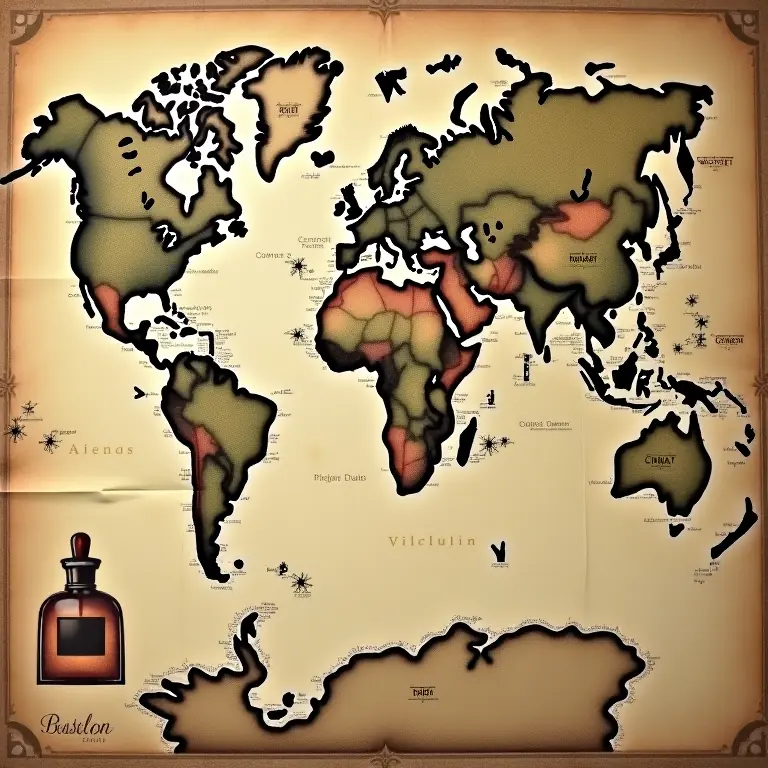
This period also coincided with the development of botanical classification, spearheaded by scientists like Carl Linnaeus. Linnaeus’s system of naming and categorizing plants provided a more systematic way to understand and document the sources of perfume ingredients. This wasn’t just about identifying plants; it was about understanding their chemical composition and potential aromatic properties. The creation of botanical gardens, like the Jardin des Plantes in Paris, facilitated the study and cultivation of these plants.
The 19th and 20th Centuries: Synthetic Chemistry and the ‘Molecular Map’
The 19th century marked a turning point with the rise of synthetic chemistry. While natural ingredients remained important, the ability to synthesize aromatic compounds in the laboratory revolutionized the perfume industry. The first synthetic fragrance, coumarin (smelling of freshly cut hay), was discovered in 1868. This opened the door to a vast array of synthetic molecules, offering perfumers unprecedented creative freedom.
The development of analytical chemistry, particularly gas chromatography and mass spectrometry, allowed scientists to identify and quantify the chemical components of natural essential oils. This led to the creation of a ‘molecular map’ of scent – a detailed understanding of the chemical compounds responsible for specific fragrances. Perfumers could now recreate natural scents synthetically or use synthetic molecules to enhance and modify existing fragrances.
Companies like Givaudan and Firmenich emerged as dominant players, investing heavily in research and development. They created vast libraries of synthetic molecules, essentially building a ‘chemical palette’ for perfumers. The geographic sourcing of natural ingredients continued, but synthetic chemistry provided a degree of independence from relying solely on volatile natural supplies. The evolution of packaging and branding also influenced the way perfume was perceived and marketed, moving it further from its medicinal and religious roots towards a luxury good. Consider how the design of antique tea services reflected social status and ritual; perfume packaging followed a similar trajectory, as explored in The Unexpected Geometry of Antique Tea Services: Form, Function and Social Ritual.
Modern Perfumery: Sustainability, Technology, and the Future of Scent Mapping
Today, the cartography of scent is more complex than ever. Sustainability concerns are driving a renewed interest in ethical sourcing and the development of sustainable alternatives to natural ingredients. ‘Green chemistry’ principles are being applied to create environmentally friendly synthetic molecules.
Technology is playing an increasingly important role. Artificial intelligence (AI) is being used to analyze fragrance data, predict scent preferences, and even design new perfumes. Scent mapping with AI allows for the visualization of fragrance profiles and the identification of novel aromatic combinations.
Headspace technology, which captures the scent of living flowers and plants without damaging them, is providing perfumers with access to previously unattainable aromas. Furthermore, the study of olfactory receptors and the neuroscience of smell is deepening our understanding of how we perceive fragrance. The ability to accurately measure and quantify scent, combined with advanced analytical tools, is creating a truly detailed ‘molecular map’ of the olfactory world.
The historical reliance on standardized units – or lack thereof – also impacted the trade and formulation of perfumes. Different regions employed varying systems of measurement, leading to inconsistencies and challenges in replicating formulas. This echoes the broader history of measurement eccentricities, as detailed in The Curious Chronicle of Forgotten Units: A History of Measurements’ Eccentricities.
The Rhythms of Scent: A Holistic Perspective
The story of perfume ingredients isn’t simply a linear progression of discovery and innovation. It’s a cyclical process, influenced by cultural trends, economic forces, and environmental factors. The rhythms of nature—the blooming of flowers, the harvesting of resins—dictate the availability of ingredients. The rhythms of trade—the ebb and flow of commerce—determine their distribution. The rhythms of the human body—our physiological responses to scent—shape our preferences.
Understanding these rhythms is crucial to appreciating the complex cartography of scent. It’s a reminder that perfume isn’t just a product; it’s a reflection of our relationship with the natural world, our history, and our own internal experience. The very concept of rhythm, often overlooked, governs many aspects of our lives, even those seemingly unrelated to scent. Delving into the hidden physics of these rhythms provides a deeper understanding of the world around us, as explored in The Hidden Physics of Everyday Rhythms.
Conclusion: A Continuing Map
The cartography of scent is not a finished map; it’s a constantly evolving one. New ingredients are being discovered, new technologies are being developed, and our understanding of smell is deepening. The future of perfumery lies in embracing sustainability, harnessing the power of technology, and respecting the rich history and cultural significance of fragrance.
Just as the resonance of forgotten instruments evokes a sense of the past, the scents of perfume connect us to the traditions and innovations of generations past. The preservation and study of these aromatic legacies, like the echoes of The Curious Resonance of Forgotten Instruments, offer valuable insights into human history and our enduring fascination with the world of scent.
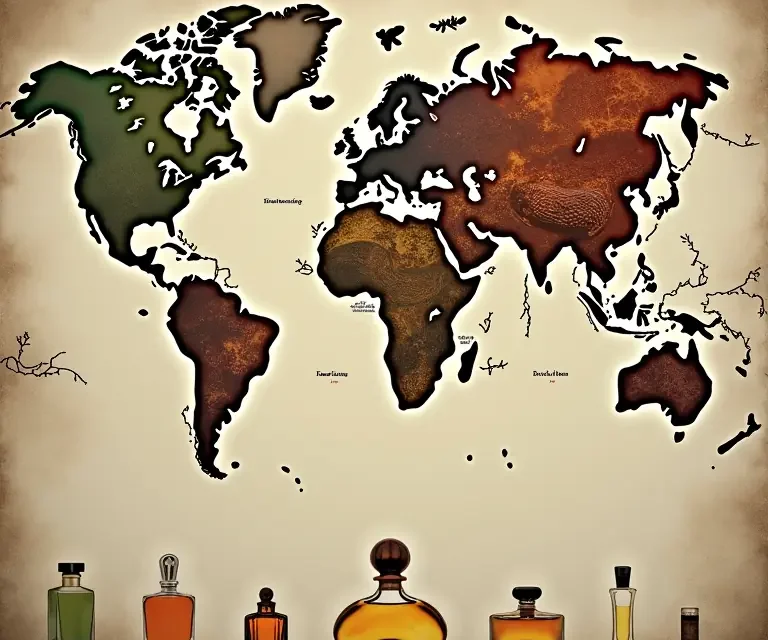

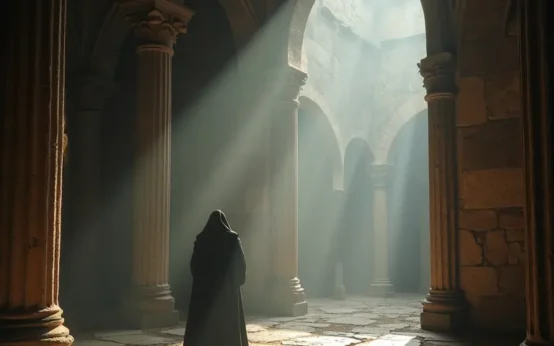 The Curious Acoustics of Historical Echo Chambers: Resonance, Ritual, and Revelation
The Curious Acoustics of Historical Echo Chambers: Resonance, Ritual, and Revelation 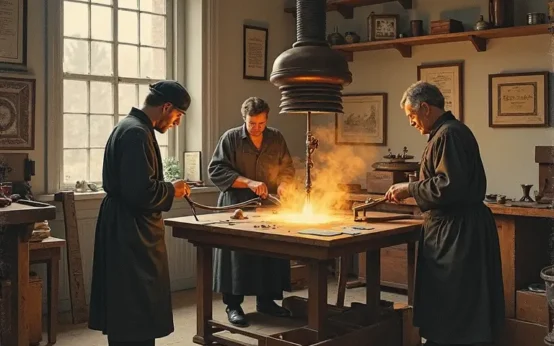 The Curious Lexicon of Lost Trades
The Curious Lexicon of Lost Trades  The Surprisingly Consistent Science of Historical Ice Harvesting – A Frozen History of Commerce & Preservation
The Surprisingly Consistent Science of Historical Ice Harvesting – A Frozen History of Commerce & Preservation 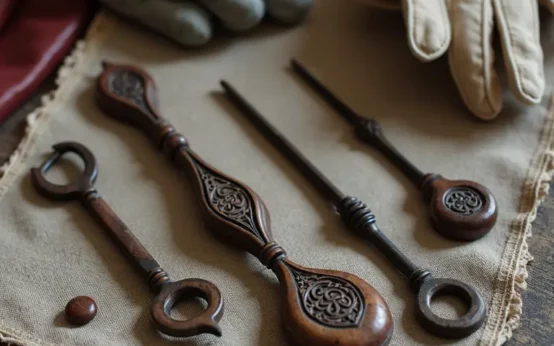 The Unexpectedly Consistent Science of Historical Buttonhooks – Fashion, Function & Forgotten Tools
The Unexpectedly Consistent Science of Historical Buttonhooks – Fashion, Function & Forgotten Tools 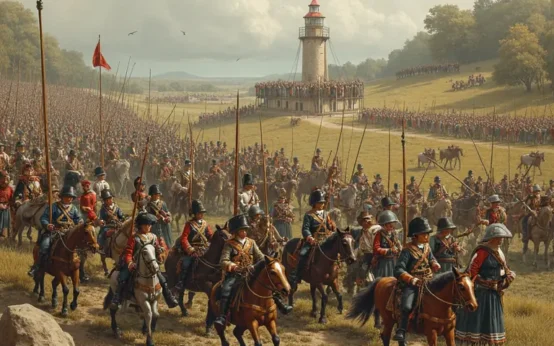 The Surprisingly Consistent Science of Historical Toy Soldiers – Miniature Warfare, Materials & Collective Play
The Surprisingly Consistent Science of Historical Toy Soldiers – Miniature Warfare, Materials & Collective Play 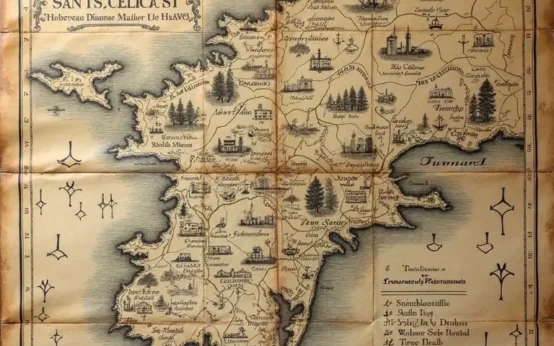 The Surprisingly Consistent Etymology of Place Names – Uncovering Stories in Street & Town Origins
The Surprisingly Consistent Etymology of Place Names – Uncovering Stories in Street & Town Origins